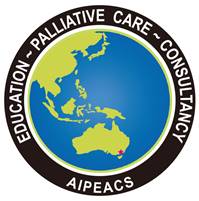

日本語訳 監修 木下佳代子 ジェックス参与
『国際看護の日』は、5月12日でした。毎年、この日に世界中で、フロレンス ナイチンゲール生誕をお祝いします。この特別な日に世界中のナースが毎日、毎時間素晴らしい仕事をしていることに感謝してお祝いをする機会となります。もしあなたがまだお祝いをしていないならご自分の仕事を振り返りお互いに認め合いましょう。
世界保健機関は次のように強調しています:
看護師が、伝染病、パンデミックの戦いの最前線で戦っていることについて、COVID-19はナースの果たしている大切な役割について明確に私たちに思い起こさせてくれます。
おめでとう
国際看護の日
今月は、緩和ケアにおける一般的な症状について考えてみましょう。嘔気と嘔吐は、緩和ケア患者によくみられる問題です。嘔気と嘔吐は、肉体的、心理的に重大な影響を患者や家族に与えます。また、患者のQOLを低下させます。
嘔気と嘔吐は、致死的な病気、例えば、がん、心不全、慢性閉塞性肺疾患、末期腎不全、そして認知症によく見られる症状です。原因は病気や治療に関連しています。こうした症状の原因を理解することの重要性は、患者にとって、過小評価されてはなりません。原因を確認することは、ある特定の治療方針(薬物以外の介入や、薬物による介入を含む)が取り入れられているその理由を私たちが理解するのに役立つことでしょう。
あらゆる症状について言えることですが、アセスメントに十分な時間をとること、そして、その評価が総合的なものであることを確認できれば、その患者に最もふさわしい治療方針であり、それゆえにより効果的なものとなるでしょう。
嘔気や嘔吐の原因(etiology)は、しばしば複雑で多くの考慮しなければならない要因があります。その複雑さを考えると、痛みの評価と管理と同じように総合的アプローチを考えると参考になります。患者の現存する病歴と診断から嘔気や嘔吐のおおよその原因についての手がかりをつかむことが出来ます。下記の表はスコットランド緩和ケアガイドライン提供の嘔気と嘔吐の評価指針です:
アセスメント:
- ● 病歴 – 嘔気と嘔吐それぞれに別の病歴を準備する:
- ・誘発要因、量、決まった症状
- ・増悪と緩和要因、使用された個々の薬物、また、複数の薬の組合せ及び投与経路(経口・注射)
- ・排便習慣
- ● 投薬- 次のような薬効を考える:
- ・嘔気や嘔吐の要因となるもの
- ・害を及ぼすもの(副作用)
- ・嘔気や嘔吐のため薬効果の判別がつかない
- ・食べ物の逆流の場合は、別のアプローチが必要なので省く
- ・同時に発生する他の症状をチェックする
- ● 診察:
- ・脱水、敗血症、薬物中毒の兆候
- ・中枢神経系
- ・腹部(例:臓器肥大、腸音、腸腔内水分の音
- ・体温、脈、呼吸のチェック
- ● 必要な時の血液検査では下記項目を含む
- ・尿素と電解質
- ・肝機能検査
- ・カルシゥム
- ・血糖
- ● 尿路感染は除外すること
- 文献:https://palliativecareguidelines.scot.nhs.uk/guidelines/symptomLast updated 14 November 2019
嘔気・嘔吐の評価の方法と管理方法を考えるときに私たちが既に知っている臨床現場でよくある原因のことを考えてみることが役に立つのではないでしょうか。例えば:
- ● 食事の早期満腹、食後の膨満、膨脹が原因による断続的に発生する嘔気。これは、―通常は少量、時には急激に、食べたものを含むを 嘔吐することにより収まる。このような臨床場面は、胃内容排出低下を示すものです。これが嘔気・嘔吐の原因の35%~45%です。
- ● 食べ物を目にしたり、その匂いにより増悪する持続的な嘔気は、嘔吐により収まることはない。これは、化学受容体誘発ゾーンに作用 用する薬の化学物質が原因であり嘔気の30%~40%に見られます。
- ● 痙攣性腹痛や排便習慣の変化に関連した断続的な嘔気。この種の嘔気は、多量で、胆汁性又は排泄物のような嘔吐で収まります。これ
- は、 腸閉塞症を暗示しており10%~30%はこれが原因です。
- ● 早朝の頭痛を伴う嘔気や嘔吐。これは、頭蓋内圧亢進を示しています。
- ● 運動、車酔いとか単に頭を回すだけで悪化する嘔気。これは、内耳前庭機能が原因と考えられます。
- ● 不安神経症に伴ってみられる嘔気・嘔吐は、皮質成分が原因として考えられます。
- 上記の出展:Treating nausea and vomiting in palliative care: a review,
- P Glare, J Miller, T Nikolova and R Tickoo, NCBI Resources, published online 12/09/2011
- 嘔気・嘔吐に関しての受容体の知識は、適切な薬物学的そして非薬物学的治療計画を確実なものとするために、最も重要なことです。緩和ケ
- アにおける嘔気・嘔吐の管理については、今後も研究が続けられていきます。
- 結論として、患者の嘔気・嘔吐の評価と治療管理の上で次の5ステップを考えることが役に立つと思います:
- 1.患者の病歴
- 2.適切な検査
- 3.誘因となっている原因の治療
- 4.適切な薬物の使用
- 5.薬物は最も有効な方法で与える。 例:嘔吐の場合、経口経路は、最有効な方法ではない。
この分野で更なる知識習得のための参考文献:
- ● Clinical Guidelines for Management of Gastrointestinal Symptoms in Cancer Patients: The Japanese Society of Palliative Medicine
- Recommendations, published online 1 Aug 2019 https://www.liebertpub.com/doi/10.1089/ipm.2018.0595
- ● Treatment of nausea with innovative antemetics, Yuki Fujii, Hanae Ida, Tatsushi Shimokuni &
- Fumihiko Haraguchi, published online 11 Mar 2017
- ● Efficacy of Prophylactic Treatment for Oxycodone- Induced Nausea and Vomiting among patients with cancer pain: A randomized,
- placebo-controlled, double-blind trial, The oncologist 2018:23:367374
- https://theoncologist.onlinelibrary.wiley.com/doi/pdf/10.1634/theoncologist.2017-0225 ● Receptor Site Chart from the Scottish Palliative Care Guidelines is a useful visual :
- https://www.palliativecareguidelines.scot.nhs.uk/guidelines/symptom-control/nausea-and-vomiting/receptor-site-chart.aspx ● Treating nausea and vomiting in palliative care: a review. Provides an overview of the epidemiology of nausea and vomiting in palliative
- care https://www.ncbi.nlm.nih.gov/pmc/articles/PMC3180521/
- ● Managing nausea in end stage disease – the podcast discusses the 4 causes of nausea and
- https://www.pallcarevic.asn.au/healthcare-professionals/about-palliative-care/care/nausea-vomiting/
いつものことですが、あなたが特に興味ある分野で追加の情報をご希望の場合、次のアドレスjulie@palliativeeducation.com までメールにて連絡くだされば、必ず、次号にて取り上げます。
日本語でも結構です。皆様方から緩和ケアについての思い、経験について教えていただきたいです。
お互いに学び合えることがあると思っています。
世界中でコロナウィルスによるパンデミックという難しい日々が続きますが、
皆様、どうぞ安全にお過ごしください。
ごきげんよう、ジュリー
Disclaimer: May 2020 免責条項:
Australian International Palliative Education and Consultancy Services (AIPEACS) は、Julie’s Corner シリーズ内の内容につき正確な情報の提供に細心の注意を注いでいますが、特にある事柄についての専門的意見を提供するものではありません。このシリーズに含まれる情報は、独立した専門家の見解に取って代るものではありません。また、医療上の助言として利用したり、何らかの疾患の治療、手当、又は、予防のために使用されるものではありません。
AIPEACSは、このシリーズにより提供される情報の利用、依存によるいかなる法的責任、怪我、紛失、損害については、責任は負いません
Australian International Palliative Education and Consultancy Services Pty. Ltd
Julie’s Corner: May 2020 (原文) [4月号より英文原文も掲載いたします]
International Nurses Day was on the 12 May. International Nurses Day is celebrated around the world on the anniversary of Florence Nightingale’s birth each year. This special day is an opportunity for us to acknowledge and celebrate the incredible work that nurses around the world do every hour of every day. If you haven’t already please take a minute to reflect on your own careers and acknowledge each other.
The World Health Organisation (WHO) highlighted:
“nurses are at the forefront of fighting epidemics and pandemics stating that COVID-19 is a stark reminder to us all of the important role nurses play”. (https://www.who.int/news-room/detail/11-05-2020-happy-international-nurses-day
This month we will reflect on another common symptom in palliative care: nausea and vomiting which is a common problem in palliative care patients. Nausea and/or vomiting has a significant impact on the physical and psychological distress patients and families will experience as well as decreasing patients Quality of Life (QOL).
Nausea and/or vomiting can occur in various life limiting illnesses for example cancer, cardiac failure, chronic obstructive pulmonary disease, end stage renal failure and dementia. The causes can be disease and or treatment related. The importance of understanding the cause of the nausea and vomiting for some patients cannot be underestimated. Identifying the cause will help us to understand the reason why specific management strategies have been put in place, including non-pharmacological and pharmalogical interventions.
As with all symptoms, if we spend more time on the assessment aspect and ensure the assessment is holistic we are more likely to develop management strategies that will be specific to the patient and therefore more effective.
The etiology of nausea and vomiting is often complex and multifactorial with many contributing factors to consider. In considering the complexity, it is often useful to consider a holistic approach as we do with the assessment and management of pain. A patient’s current diagnosis and medical history will provide cues as to the possible causes of the nausea and/or vomiting. The below table provides a guide to the assessment for nausea and vomiting as provided by the Scottish Palliative Care Guidelines:
Assessment:
- History ‒ a separate history for both nausea and vomiting:
- triggers, volume, pattern
- exacerbating and relieving factors, including individual and combinations of drugs tried and routes used
- bowel habit
- medication – consider drugs that may:
- contribute to the nausea and vomiting
- cause harm
- not take effect due to the nausea and vomiting
- exclude regurgitation as this will require a different approach.
- check for other concurrent symptoms.
- Examination:
- general review for signs of dehydration, sepsis and drug toxicity
- central nervous system
- abdomen (for example organomegaly, bowel sounds, succussion splash)
- check temperature, pulse and respiration
- Blood investigations where appropriate may include:
- urea and electrolytes
- liver function tests
- calcium
- blood glucose.
- Consider excluding urinary infection.
(accessed 29 /3/2020 https://www.palliativecareguidelines.scot.nhs.uk/guidelines/symptom-control/Nausea-and-Vomiting.aspx) last updated 14 November 2019
A useful approach for assessing and identifying strategies to manage nausea and vomiting is to consider what we know of potential clinical scenarios for some of the more common causes for example:
“· Intermittent nausea associated with early satiety and postprandial fullness or bloating. The nausea is relieved by vomiting that is usually small volume, occasionally forceful, and may contain food. This clinical picture suggests impaired gastric emptying. This is the cause in 35%–45% cases of nausea and vomiting.
- Persistent nausea, aggravated by the sight and smell of food, unrelieved by vomiting. This suggests chemical causes, activating the chemoreceptor trigger zone. It is found in 30%–40% cases.
- Intermittent nausea associated with abdominal cramps and altered bowel habit. The nausea is relieved by vomiting that may become large in volume and bilious or feculent. This suggests a bowel obstruction and is the cause in 10%–30% cases.
- Early morning nausea and vomiting associated with headache. This suggests raised intracranial pressure.
- Nausea aggravated by movement, including motion sickness or even just turning the head. This indicates a vestibular component.
- Nausea and vomiting associated with anxiety, suggesting a cortical component.”
(Treating nausea and vomiting in palliative care: a review. P Glare, J Miller, T Nikolova and R Tickoo, NCBI Resources, published online 12/09/2011, accessed 20/5/2020 https://www.ncbi.nlm.nih.gov/pmc/articles/PMC3180521/
“· Intermittent nausea associated with early satiety and postprandial fullness or bloating. The nausea is relieved by vomiting that is usually small volume, occasionally forceful, and may contain food. This clinical picture suggests impaired gastric emptying. This is the cause in 35%–45% cases of nausea and vomiting.
- Persistent nausea, aggravated by the sight and smell of food, unrelieved by vomiting. This suggests chemical causes, activating the chemoreceptor trigger zone. It is found in 30%–40% cases.
- Intermittent nausea associated with abdominal cramps and altered bowel habit. The nausea is relieved by vomiting that may become large in volume and bilious or feculent. This suggests a bowel obstruction and is the cause in 10%–30% cases.
- Early morning nausea and vomiting associated with headache. This suggests raised intracranial pressure.
- Nausea aggravated by movement, including motion sickness or even just turning the head. This indicates a vestibular component.
- Nausea and vomiting associated with anxiety, suggesting a cortical component.”
(Treating nausea and vomiting in palliative care: a review. P Glare, J Miller, T Nikolova and R Tickoo, NCBI Resources, published online 12/09/2011, accessed 20/5/2020 https://www.ncbi.nlm.nih.gov/pmc/articles/PMC3180521/
Knowledge of the receptors likely to be involved in nausea and/or vomiting is essential to ensure an appropriate pharmacological and non-pharmacological plan is put in place. The management of nausea and/or vomiting in palliative care continues to be researched.
In summary it is useful to consider 5 steps for assessing and managing nausea and vomiting in our patients:
- Patient History
- Targeted examination
- Treat underlying cause where possible
- Use appropriate drug
- Give drug in most effective way. For example, if vomiting oral route will not be the most effective route
( concept of 5 steps developed by Dr Davide Brumbley ( Australian Palliative Care Physician)
Useful resources to further your reading in this area:
- Clinical Guidelines for Management of Gastrointestinal Symptoms in Cancer Patients: The Japanese Society of Palliative Medicine Recommendations, published on line 1 Aug 2019 https://www.liebertpub.com/doi/10.1089/jpm.2018.0595Treatment of nausea with innovative antiemetics, Yuki Fujii, Hanae Ida, Tatsushi Shimokuni & Fumihiko Haraguchi, published onlike 11 Mar 2017
- Efficacy of Prophylactic Treatment for Oxycodone- Induced Nausea and Vomiting among patients with cancer pain: A randomized, placebo-controlled, double-blind trial, Hiroaki Tsukuura, Masayuki Miyazaki, Tatsuya Morita, Mihoko Sugishita, Hiroshi Kato, Yuka Murasaki, Bishal Gyawau, Yuko Kubo, Masahiko Ando, Masashi Kondo, Kiyofumi Yamada, Yoshinori Hasegawa, Yuicki Ando, The oncologist 2018;23:367-374 https://theoncologist.onlinelibrary.wiley.com/doi/pdf/10.1634/theoncologist.2017-0225
- Receptor Site Chart from the Scottish Palliative Care Guidelines is a useful visual to help us to consider which receptors are causing the nausea and or vomiting, likely causes and targeting treatment options https://www.palliativecareguidelines.scot.nhs.uk/guidelines/symptom-control/nausea-and-vomiting/receptor-site-chart.aspx
- Treating nausea and vomiting in pallaitive care: a review. Provides an overview of the epidemiology of nausea and vomiting in pallaitive care, definitions and causes of nausea and vomiting, goals of assessment of nausea and pharacological approaches to treatment. https://www.ncbi.nlm.nih.gov/pmc/articles/PMC3180521/
- Managing nausea in end stage disease – the podcast discusses the 4 causes of nausea and outlines a five step approach in the management of nausea in patients with end stage disease. Duration 10 minutes https://www.pallcarevic.asn.au/healthcare-professionals/about-palliative-care/care/nausea-vomiting/
- CareSearch – Nausea & Vomiting. Evidence based information and resources on the management of nausea and vomiting in palliative care, collated by CareSearch
As always if you have any particular areas you would like additional information about please forward your request to julie@palliativeeducation.com and we will ensure this is discussed. Please let me know how you are going as we would enjoy sharing your thoughts and experiences on palliative care, so that we can continue to learn from each other.
Stay safe during this difficult time with the world coronavirus pandemic
Take care, Julie
ュリーの寄稿 緩和ケアについて
